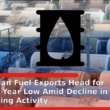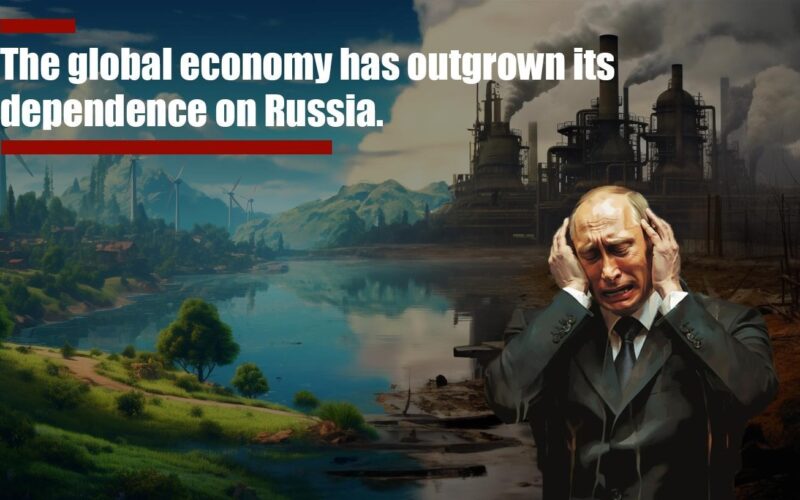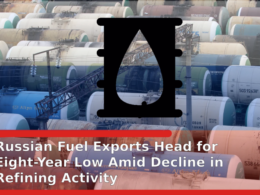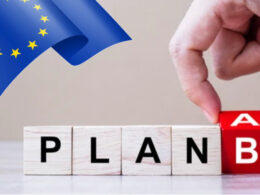By Jeffrey A. Sonnenfeld, the Lester Crown professor in management practice and a senior associate dean at the Yale School of Management, and Steven Tian, the director of research at the Yale Chief Executive Leadership Institute.

Over the course of the preceding year, particularly since his incursion into Ukraine in February, Russian President Vladimir Putin has enjoyed a sense of unassailable power in the realm of energy, effectively holding the global economy hostage to his caprices. From last summer onward, Putin strategically throttled natural gas supplies to Europe, banking on the notion that a population left shivering and without heat would turn against their leaders, rendering political support for Ukraine untenable.
This threat was indeed formidable: In 2021, a staggering 83 percent of Russian gas found its way to European markets. Russia’s comprehensive exports, comprising 7 million barrels of oil daily and 200 billion cubic meters (bcm) of piped gas annually, constituted approximately half of its federal revenue. Beyond these figures, Russia’s commodities exports played an indispensable role in global supply chains, with Europe relying on Russia for 46 percent of its gas supply, alongside significant dependence on other Russian goods such as metals and fertilizer.
As we are in the third year of Putin’s invasion, it has become evident that Russia has irrevocably relinquished its former economic prowess on the global stage.
Thanks to an unusually mild winter across Europe, Putin’s pinnacle of leverage has passed without incident. As we accurately predicted last October, Russia has emerged as the principal casualty of Putin’s gas gambit. His leverage in the natural gas realm has dissipated entirely, as the world—most significantly Europe—has moved beyond the need for Russian gas.
Contrary to dire predictions of freezing populations, Europe swiftly secured alternative gas sources by shifting towards global liquefied natural gas (LNG). This transition included an estimated 55 bcm from the United States, surpassing prewar U.S. LNG exports to Europe by two-and-a-half times. Augmented by increases in renewable sources, nuclear energy, and interim coal usage, these alternative supplies have reduced Europe’s reliance on Russian gas to a mere 9 percent of its total gas imports. In fact, Europe now procures more LNG than it ever imported from Russia.
Furthermore, Europe’s unseasonably warm winter has not only averted worst-case scenarios but has left its storage tanks nearly untouched, poised to carry over into the next winter season. As of January, German storage facilities were at a record 91 percent capacity, up from 54 percent the previous year, suggesting Europe will need to procure significantly less gas in 2023 compared to 2022.
The ramifications are profound. Europe is now assured of ample energy supplies well into 2024 at the least, allowing sufficient time for the integration of cheaper alternative energy sources—both renewable and transitional fuels—into its infrastructure. This includes the planned addition of 200 bcm/year in LNG export capacity by 2024—sufficient to entirely and permanently supplant Russia’s 200 bcm/year gas exports.
Moreover, the era of globally inflated energy prices due to “Russia-driven supply squeezes” has reached its conclusion. Alongside Europe’s diminished LNG demand, China is redirecting its focus away from global LNG towards domestic sources. With the rapid expansion of LNG supply, it is hardly surprising that the gas futures market is now pricing gas to be cheaper than prewar levels for the foreseeable future.
Conversely, Putin finds himself devoid of any leverage and bereft of options to replace his erstwhile primary clientele. He is discovering firsthand that consumers can readily replace unreliable commodity suppliers, whereas suppliers struggle to identify new markets. Currently, Putin reaps scant profits from gas sales; his former 150 bcm sales of piped gas to Europe have been supplanted by a mere 16 bcm to China and nominal earnings from global LNG sales, barely sufficient to cover expenses. There exist no markets where Putin can offset this 150 bcm deficit: China lacks the requisite pipeline capacity for additional imports for at least a decade, and prefers domestic and diversified energy sources. Russia’s antiquated technology hampers any swift scaling of LNG exports beyond a meager trickle.
Putin’s leverage in the oil sector is similarly waning. The days of oil price spikes by 40 percent within two weeks due to fears of Putin restricting Russian oil supplies are a thing of the past. In fact, in response to the recent G-7 oil price cap, which we contributed to formulating, Putin’s announcement of an export ban from February 1 to countries accepting the cap actually led to a decrease in oil prices.
This shift can be attributed to the world’s decreasing reliance on Putin’s oil. The oil market is now tilting in favor of buyers, amidst a surplus of supply more than adequate to offset potential reductions in Russian crude production. (In December, Russian Deputy Prime Minister Alexander Novak informed Russian media that the government was willing to slash crude production








